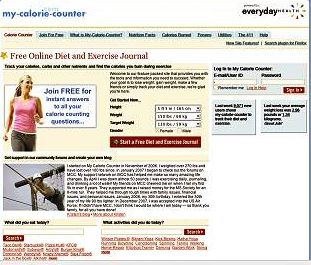The facts behind fad diets
If you’re like most people, you’ve been on at least one diet-from Atkins to the Zone diet and everything in between. And if you’re like most people, you probably lost some weight…and then gained it back.
If you’re like most people, you’ve been on at least one diet-from Atkins to the Zone diet and everything in between. And if you’re like most people, you probably lost some weight…and then gained it back.

Many popular diets are fad diets. That is, they promise quick, dramatic weight loss with little effort. Unfortunately, if a diet sounds too good to be true, it probably is. Fad diet plans often lack variety, omit nutrients essential for good health and label certain foods as bad ones that must be avoided. Some fad diets attribute almost magical qualities to certain foods.
The reality is there are no super foods, no magical answers to weight loss and no foods that are forever off limits. The real key to success is about balancing the calories you eat with the calories you burn through physical activity.
Instead of jumping on the fad diet bandwagon again, focus instead on these tips to help you lose weight and live healthfully.
Set realistic goals. Change doesn’t mean you have to give up the foods you like. Divide big goals like, “I will eat better” into smaller, more focused ones, such as “ I will eat one extra piece of fruit each day” or “I will put one-third less food on my dinner plate.” Make small changes over time, adding a new change to the mix only when the old one becomes a regular habit.
Stick to proper portions. Most people eat portions of food that are so large, they could feed at least two people. Getting a handle on proper portion sizes can help you slim down by allowing you to eat the foods you love, just in smaller amounts. It’s difficult to visualize a half-cup or three ounces, so use these comparisons:
- A teaspoon of margarine is the size of the tip of your thumb to the first joint.
- Three ounces of meat is the size of a deck of cards.
- One cup of pasta is the size of a tennis ball.
- One half of a medium bagel is the size of a hockey puck.
- One-and-a-half ounces of cheese is the size of three dominos.
- Two tablespoons of peanut butter is the size of a ping pong ball.
- One-half cup of vegetables is the size of a light bulb.
Compare the amount you typically eat to these recommendations, and make modifications as needed.
The breakfast rush
If time is a concern in the mornings, start your day with quick breakfast options, like:
- Whole-grain cereal with fruit and low-fat milk or yogurt.
- Frozen whole-grain waffles topped with peanut butter and banana slices.
- Instant oatmeal made with low-fat milk and dried cherries.
- A whole-wheat pita stuffed with sliced hard-cooked eggs.
Eat breakfast. Research shows that if you’re trying to lose weight, you need to make breakfast a priority. According to a study from Harvard Medical School, men and women who eat breakfast everyday are far less likely to become obese, compared to those who skip it.
Track your progress. Monitoring the number of calories you eat and keeping them within your targeted range is a key factor in losing weight. Studies show people who write down what they eat and pay attention to how many calories they are eating are more successful at losing weight and keeping it off.
You don’t have to show your record to anyone else-just keep yourself accountable to what you are eating. As long as you’re at it, weigh yourself weekly and keep track of your exercise daily. Give yourself a gold star on your calendar for every day you reach your diet, exercise or weight goals.
If you’re more comfortable with a keyboard than a pen and paper, register for a free Internet service that will count your calories for you as you log your food.
Slow down. Many of us eat too quickly, don’t wait for our body to tell us we’ve had enough and before we know it we are overfull. Eating isn’t a race, so don’t try to get to the finish line too quickly. If you’re a fast eater, slow down by:
- Drinking a low-cal or no-cal beverage like water or unsweetened tea with your meal.
- Putting your fork down between bites.
- Talking with fellow diners instead of focusing on how much or how quickly you can eat.
You’ll find you can probably eat one-fourth to one-third less food if you slow down, enjoy your meal and wait for your stomach to signal to your brain that you are full.
Eat more watery foods. Fiber-rich, watery foods deliver more volume to your plate and fewer calories. Try broth-based soups, fruits and vegetables, fat-free and low-fat milk and yogurt, and beans for low energy density, high volume foods that you can eat more of without all the calories.
Strike a balance between food and physical activity. Regular physical activity is important for your overall health and fitness. It helps control body weight, promotes a feeling of well-being and reduces the risk of chronic diseases. Go for a walk or hike with a friend, try a new activity like tai chi, swim some laps or find another activity you enjoy-and will keep doing.
Find a registered dietitian. For help in developing a healthy weight loss plan that’s personalized for you, contact a registered dietitian. You can find a dietitian in your area by visiting eatright.org and clicking on “Find a Nutrition Professional.”

Let Nike and iPod become your new personal trainer. With the Nike + iPod Sport Kit you can use Nike+ running shoes and a Nike + iPod Sport Kit or Sensor to allow your iPod nano or iPod touch to motivate you mile after mile. Also, you can connect your iPod to a Nike + iPod compatible cardio machine at the gym and track the progress of your workouts.
Visit: apple.com/ipod/nike

Web sites such as my-calorie-counter.com allow you to keep track of what you eat and your weight loss progress over time.
Kerry Neville is a Registered Dietitian who is also a National Media Spokesperson for the ADA. Ms. Neville has been on Chicago’s FOX News in the Morning, and has been a past columnist for the Chicago Tribune’s Health Watch.
Oral Health Pavilion at HLTH 2024 Highlighted Links Between Dental and General Health
November 4th 2024At HLTH 2024, CareQuest, Colgate-Palmolive, Henry Schein, and PDS Health launched an Oral Health Pavilion to showcase how integrating oral and general health can improve patient outcomes and reduce costs.
Floss & Flip Flops Episode 22: National Dental Hygiene Month
October 1st 2023Join the Sanders Sisters and Dr Anna Kay Thompson as they learn about the burning questions the medical community is not asking about oral health. Learn about all of the ways they are celebrating the good work of dental hygienists in their quest for whole-body health.